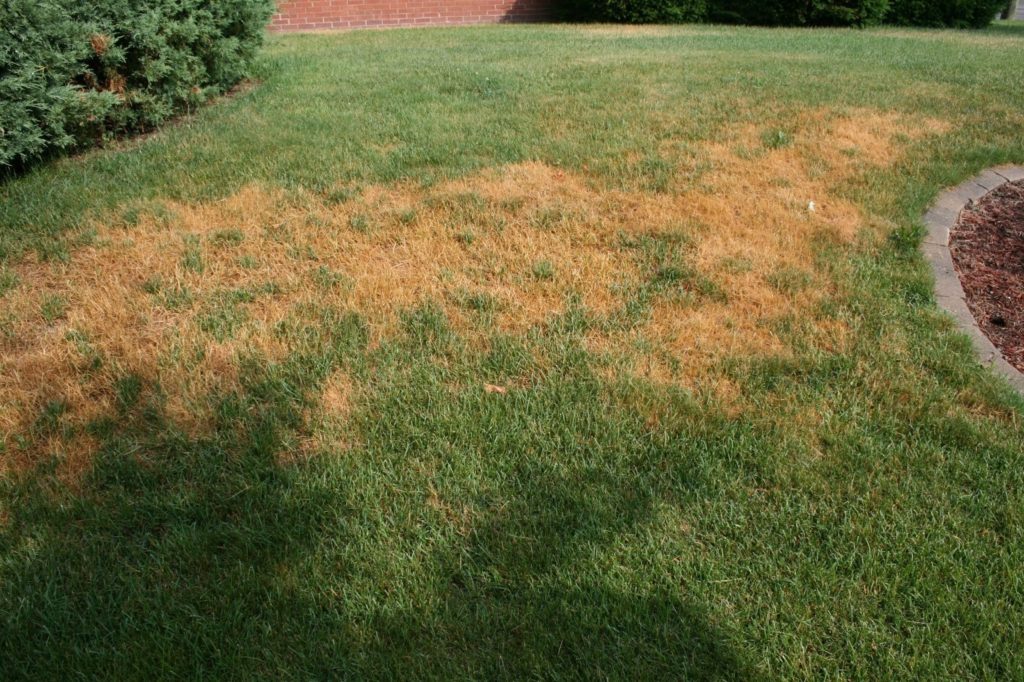
5 Tips to Help Your Lawn Health During the Summer Heat
The health of your lawn is important all year round, but may not ever be as threatened as it is during the summertime. This is because all of the lawn predators are out and about, and poor conditions compound, creating a ripe environment for general decay. Many lawn pests thrive in dry conditions, which also lead to drought if there is a lack of irrigation. The same can be said for disease and weeds, which will only be more prevalent in a poorly maintained turf. With that being said, we want to make sure your lawn health is on point this summer. While our annual lawn program is comprehensive and thorough, here are five tips to help your lawn health during the summer heat.

1. Irrigation: Properly Watering your Lawn
In our local area, we have very tough clay soil. This means that underwatering, but also overwatering, can become a problem. Your lawn requires irrigation to prevent drought stress but does not need to be flooded. Excess moisture can attract pests and keep your roots from deeply developing. Getting your system inspected, adjusted, and optimized twice a year is really important. If you are wondering when is the best time to do this, the answer is early spring and summer. Early spring is a great time to make sure you are ready and set up as your grass, plants, and flowers are coming out of their dormant state. The summer is a great time because the heat can show your problematic areas and weaknesses. Your turf does need to be watered, but it should be done in the morning in short intervals. This way, water has time to slowly seep into the soil without evaporating. Click here for more proper watering practices.
2. Know the Specifics of your Turf
While there are some general rules of thumb when it comes to lawn maintenance, different turfgrasses have different needs. Especially in the summer when predators are lurking, knowing how much water your turf needs, what diseases it may be susceptible to, and how it deals with stress will give you a better idea of how to care for it. By being here you are already well on your way, but research the specifics of your turfgrass variety or ask us.
3. Add Nutrients: Organic Blended Fertilizer
If there is one thing that is certain, it is that your lawn needs nutrients to survive. While we hope that there are enough nutrients present in your native soil, this is not always the case. Every lawn can use an extra boost of nitrogen, phosphorus, and potassium, along with the extra organic additives in Higher Ground fertilizer. Some of these organic additives include seaweed kelp extract, microbial metabolites, and chelated iron. This increases the biodiversity and long-term health of your soil. We find this to be so important that it is applied twice in late spring as a part of our annual lawn program.
4. Increase Mowing Heights
Cutting your turf too short is a common lawn care mistake, and puts unneeded stress on your turf. It hinders root development and forces turf to work twice as hard. Shorter turf also dries out the soil faster. Raising your mowing heights creates deep roots and more efficient water uptake. Rather than trying to minimize your number of cuts, never cut more than ⅓ of the blade off at one time. For a previous blog on this topic, check out this link.
5. Routine Lawn Inspection
Even if you follow all of the tips presented in this blog, you could still be the victim of an infestation – whether it be an irrigation system defect, fungal disease, pest, or weeds. The earlier you catch these potential problems the easier it will be to rid your lawn of them. Common symptoms can look identical to drought stress, so do not overlook brown patches. Routinely inspect your lawn on the lookout for their symptoms, and you will catch issues quickly.
Higher Ground Lawn Care and Lighting are ready to take your property to a higher level. Experience why your neighbors and businesses in University Park, TX & surrounding areas trust Higher Ground Lawn Care & Lighting with their properties. Give us a call at (682) 206-3596 or check out our website today.
Ready to get started?


